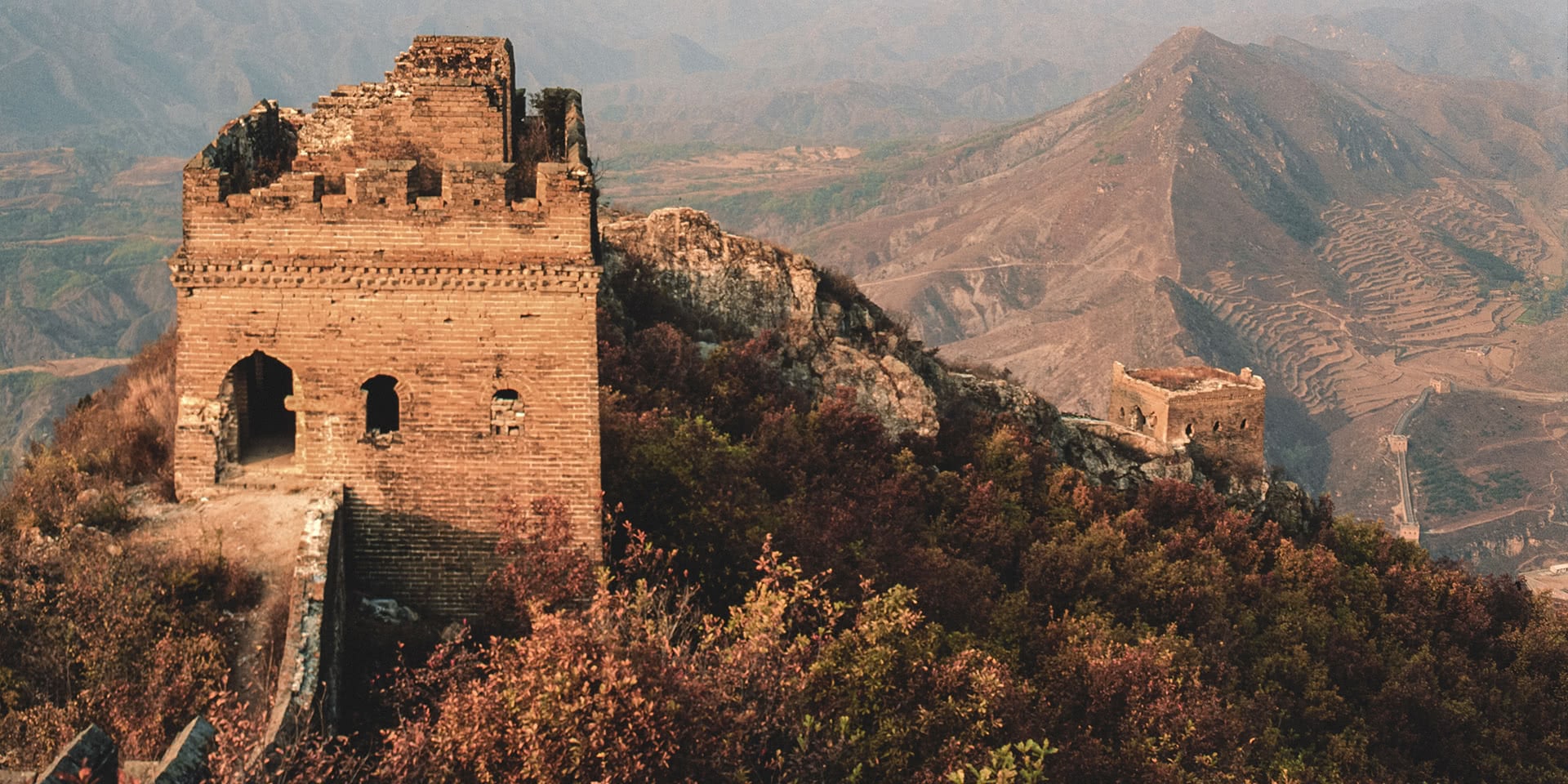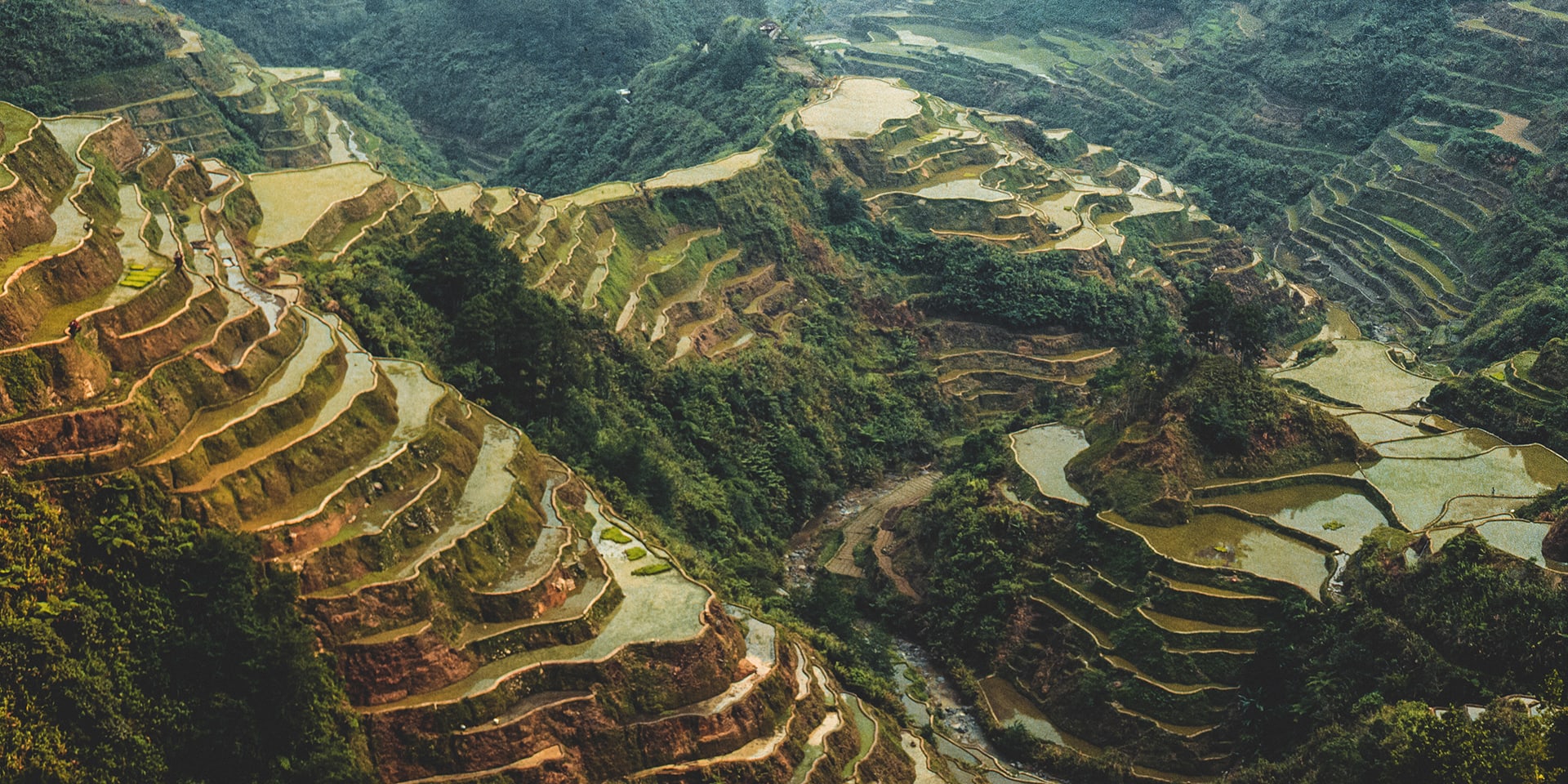
The Philippines is a lush, tropical paradise. “Discovered” by Magellan on his maiden attempt to navigate the globe, the archipelago nation has since fallen into the hands of Spain, the U.S. and Japan, before finally gaining independence. But while much of the Philippines been largely influenced by the outside world, there‘s one area amidst its many islands that has resisted such an encroachment, perfect for those seeking an authentic Philippines experience: Ifugao.
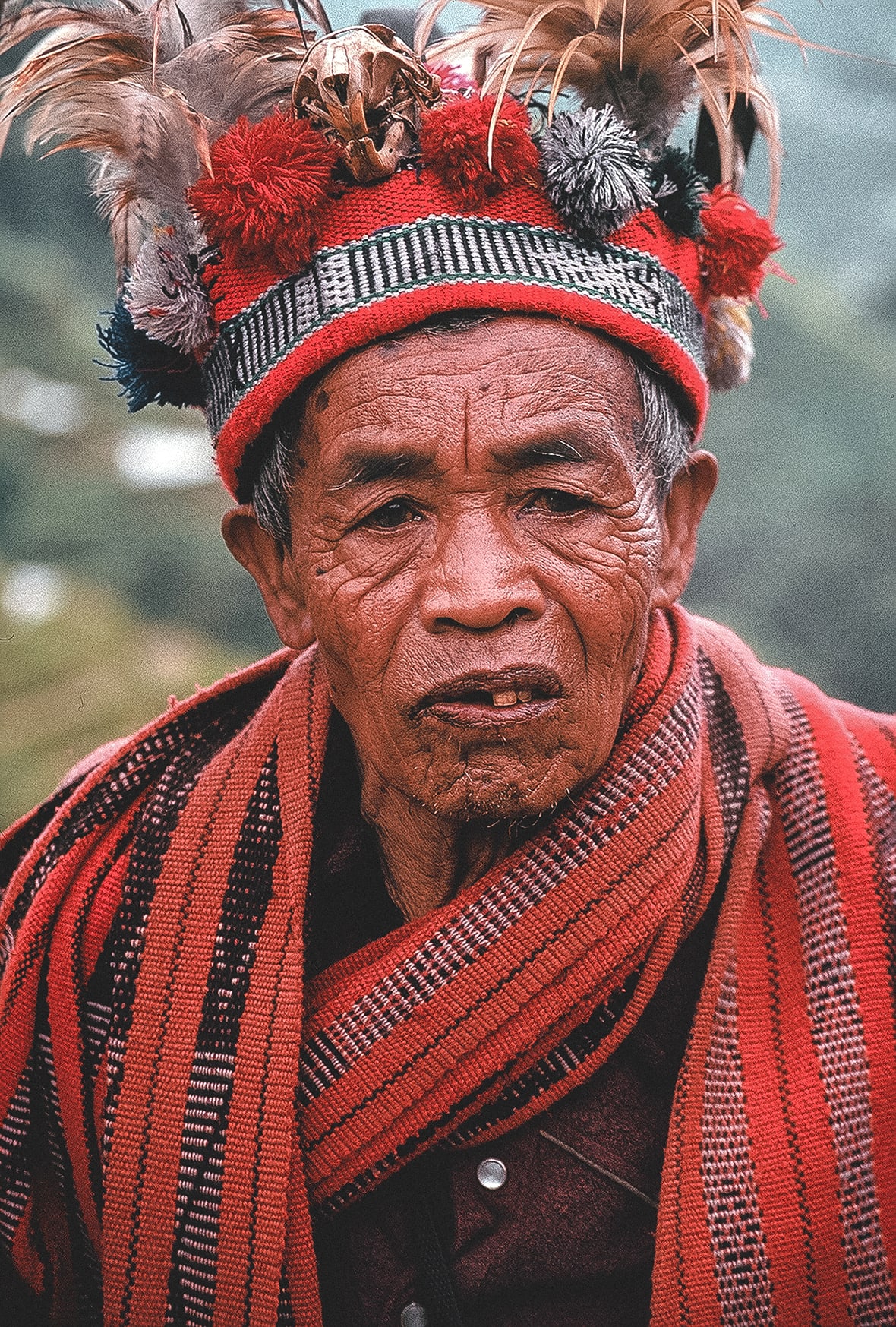
I have traveled to the beautiful Philippines more than 30 times, and out of all the places I’ve visited, the rugged Ifugao is one of many favourite areas. I first visited the area in 1993, when we took a torturous 10-hour bus ride from Manila to Bagiuo, continuing on to Banaue for another nine hours. At one point, the bus broke down and we were actually left on the side of the road to flag down another one. At that time, travel to this area was not particularly safe for foreigners, as there were NPA guerillas operating, as well as the national military. We weren’t sure if perhaps the two groups being in the same area wasn’t entirely coincidental. (This area is no stranger to war: the Japanese made their last stand here against the Americans during World War II under General Yamashita.)

The Banaue viewpoint is one of the country’s most stunning vistas, and as such, the main tourist attraction. There’s always a group of old Ifugao men and women standing around in their traditional clothing. I saw many of the same people on both my visits in 1993 and later in 1999, but noticed the numbers dwindling dramatically on my later visit. I am left to wonder – how many will remain by the time I return? Who will be left to remember their bravery in fighting off the technologically superior Conquistadors and the Japanese Imperial Army? Who will pass down their stories for the next generations to come?
Batad, a day-trip from Banaue, is known as the “Philippines Cordilleras.” The locals migrated from China’s southwest region over the centuries. To get there, it’s necessary to travel along the Batad Saddle, hugging the mountainous terrain.
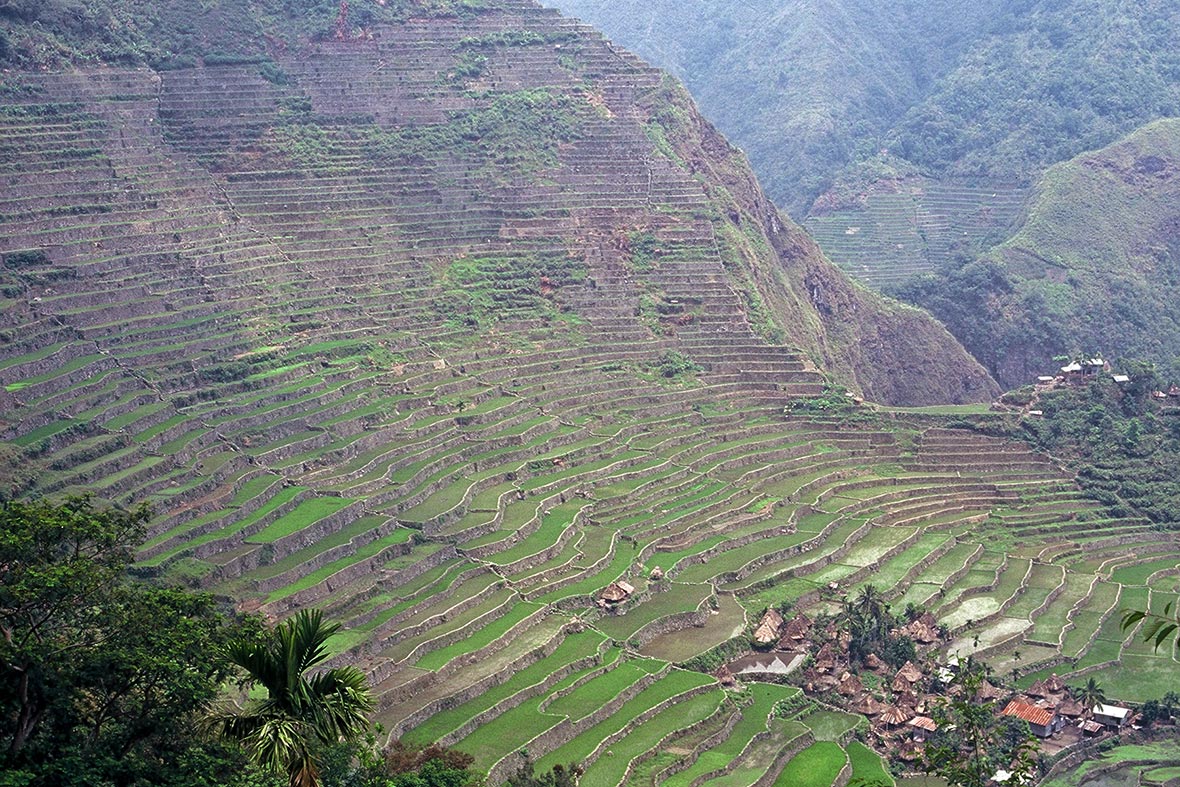
I myself made the journey to Batad. Hiking there was no easy feat, but rather a two hour slog in each direction. We were trekking along the steep rice terraces, and as such, it was very easy to fall down. It was incredibly hot, and as my wife (then girlfriend) and I were struggling, a 90-year-old woman with 25 lbs of supplies on her head came cruising past us – she had clearly done this walk every day of her life. I should mention that these rice terraces are over 2,000 years old: they may not be a UNESCO World Heritage Site, but they are considered a “National Philippine Treasure.” In fact, if you lined them up into one connecting “road”, they would reach halfway around the Earth.
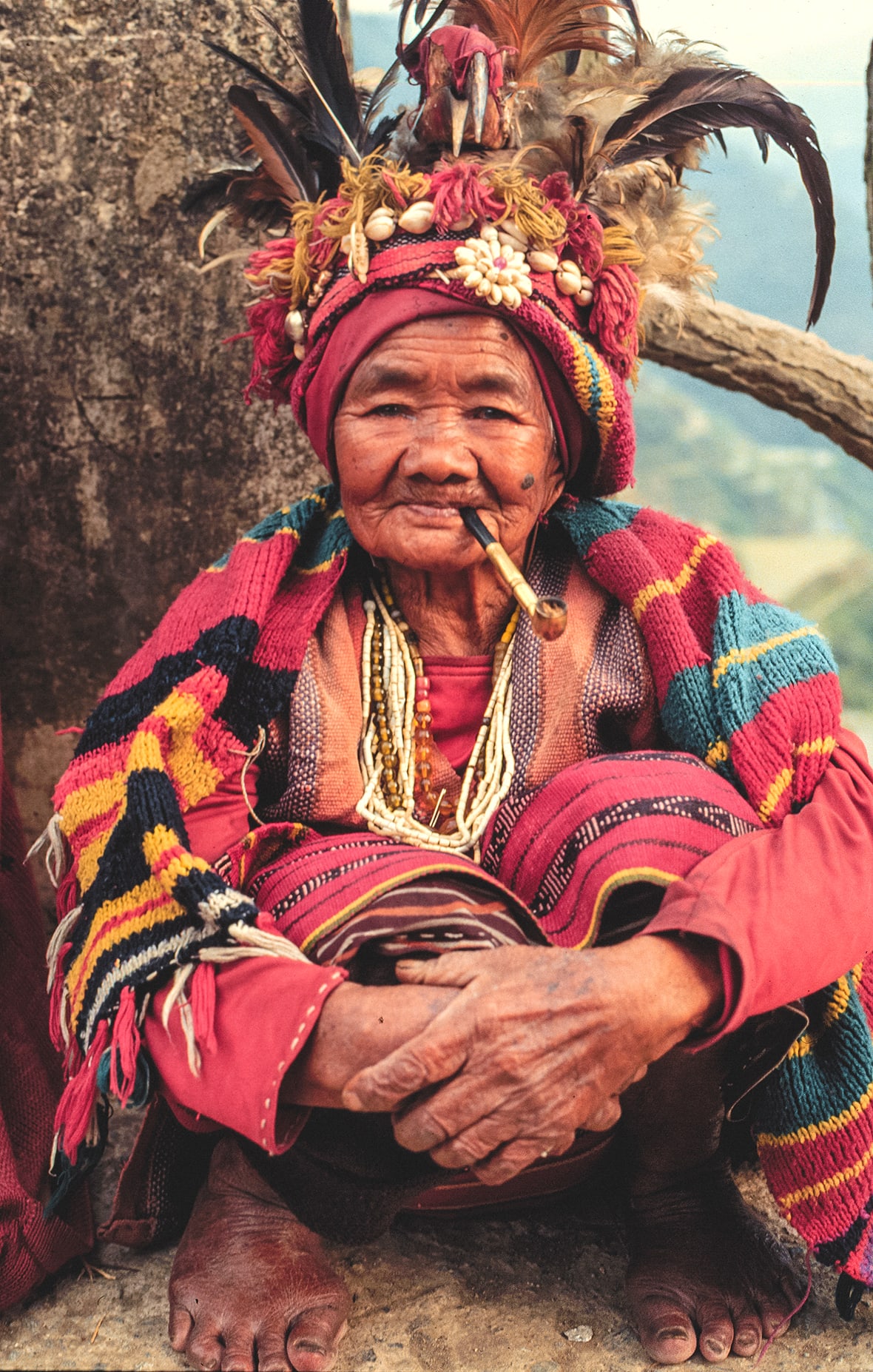
Not only were these rice terraces built without any kind of machinery, but all the agriculture done today uses traditional farming methods like irrigation and stonework, and does not used any genetically modified organisms. The terraces are kept wet year-round to protect their structural integrity, preventing the land from drying out unevenly and forming major landslides. It is important to give credit to those who wish to preserve traditional farming methods, and not yield to the temptation of seeking genetically-enhanced, higher-yield agricultural products.
However, modern residents are not as keen on working the rice fields as their ancestors were. Teens and other youngsters are being influenced by mass media stimuli and the emerging global culture. In the 1940’s and 1950’s, this land produced a surplus that was sound elsewhere on the island. These days, farmers will be lucky if they can feed their own families. Rice farming is labor intensive, backbreaking work, and these terraces and their maintenance costs are not cheap. Opening a guest house, carving statues and selling sodas to tourists may seem a more tempting way to make a living in light of the physical labor involved in rice farming. This is not a lifestyle for any but the hardiest.
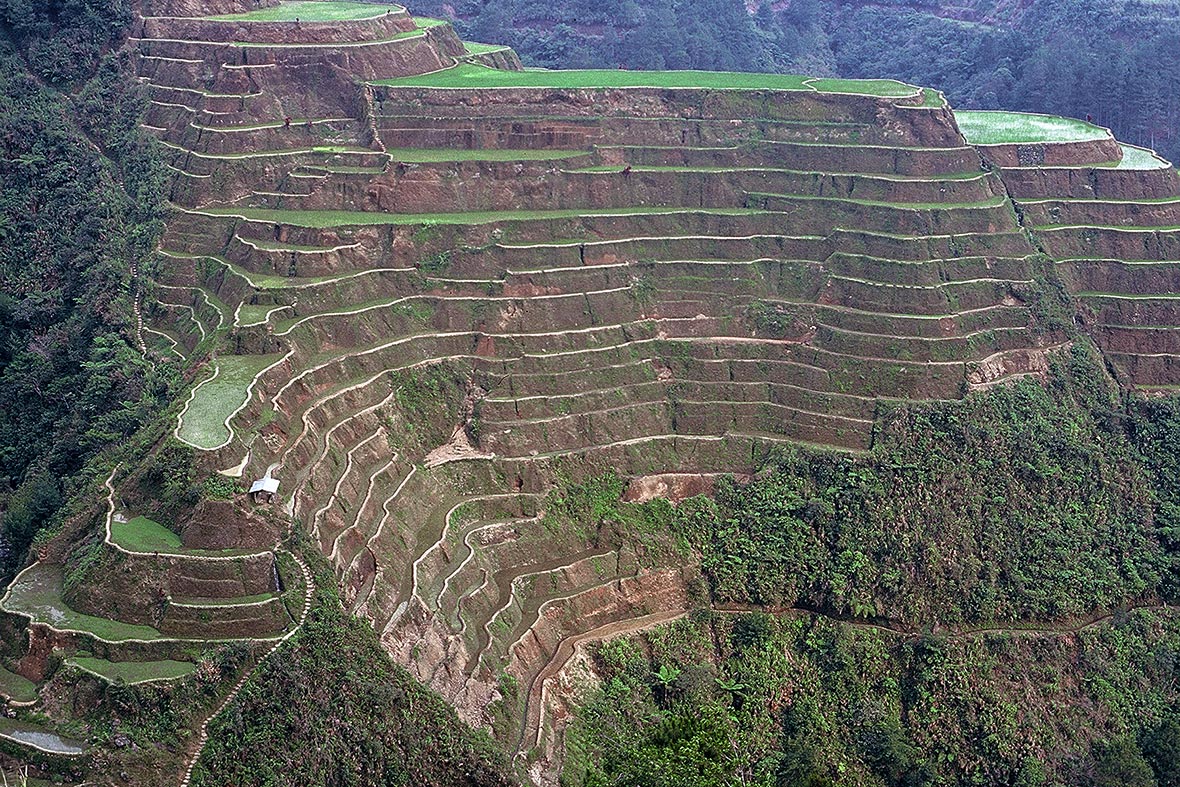
On my second, more recent trip, I headed up to Banaue with a colleague after a business trip to Manila. We hired a car and drove nine hours from Manila overnight. As we were approaching the village of Banaue in the early morning hours, the road was suddenly blocked. There had been a large mudslide moments before, completely blocking the road. As such, we were forced to sleep in the car for a few hours until the sun came up. Since the road could not be cleared for at least a day, we had to walk on a path only 12 inches wide to pick up a bus on the other side. At one point, I slipped and was literally up to my waist in mud! Several people pulled me out and I continued into town looking like a complete mess.
On this trip, we were hunting Ifugao rice god statues, known as Bulul. Once word got out that two foreigners were looking for Bululs, people started showing up at our guest house in droves trying to sell their statues. Most were reproductions made to look old; however, we did manage to find a few authentic pieces.
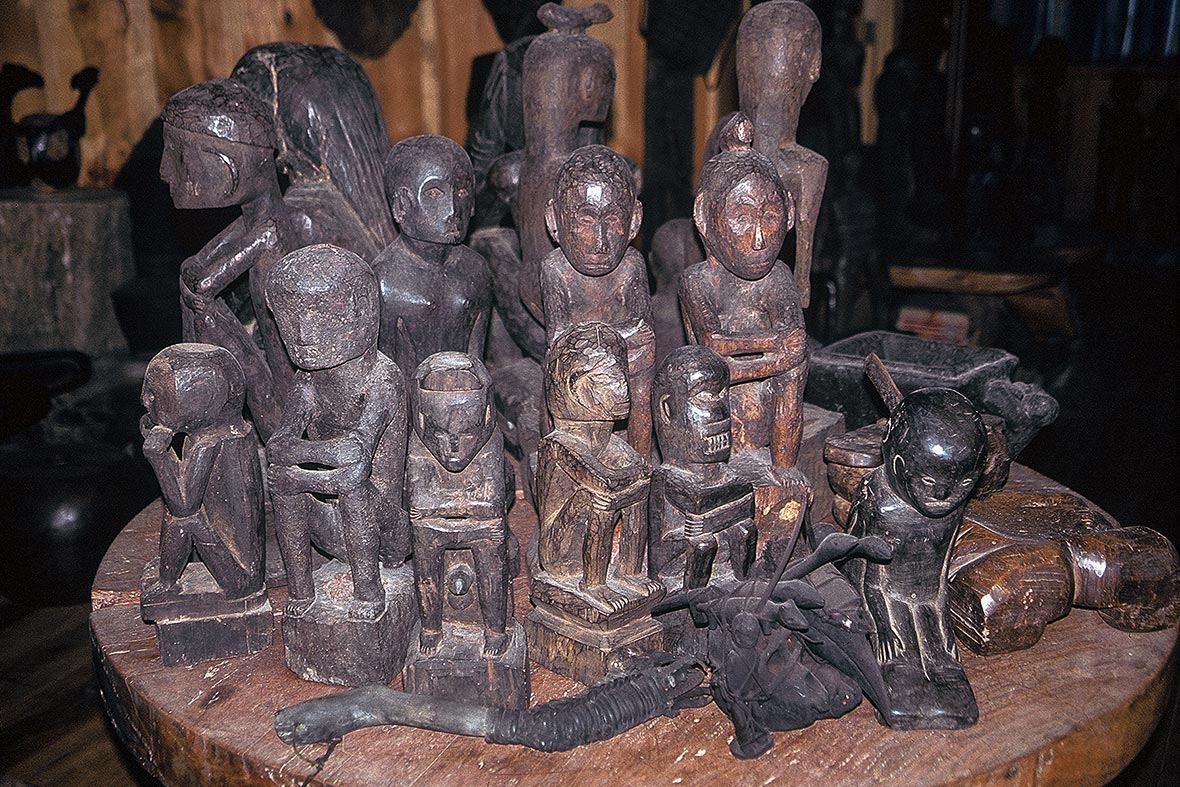
One of the highlights of this trip was meeting an American living in Banaue named George Schenk, a horticultural enthusiast. Schenk now runs the Museum of Cordilleran Sculpture, founded over three decades ago. The museum seeks to uphold Ifugao and Bulul culture so it does not vanish forever. During my visit, the museum had not yet opened and George graciously invited us inside for a private tour. The collection is simply astounding – nothing else like it exists in the Philippines, Asia and perhaps the whole world. While many such Bulul idols were stripped from the Philippines back in the 1960’s and 1970’s, here, visitors will find an outstanding collection of such idols. The museum depicts the pagan ancestral worship of the Ifugao people (whose name is thought to come from “ipugo” or “rice eaters”). The Ifugao, a religious people, sought to understand and even deify their “rice gods.” The Bululs, hewn from red sandalwood, were in fact guardians of the harvest who – long before genetically-enhanced seeds even existed – could multiply rice yields. The rice traditionally grown here is called “tinawon,” which exudes a special aroma apparent during tasting. It is not, however, a high-yield strain of rice. Bululs represented the lifecycle of the female and the male living in union that would enhance protection of local communications from malevolent spirits.
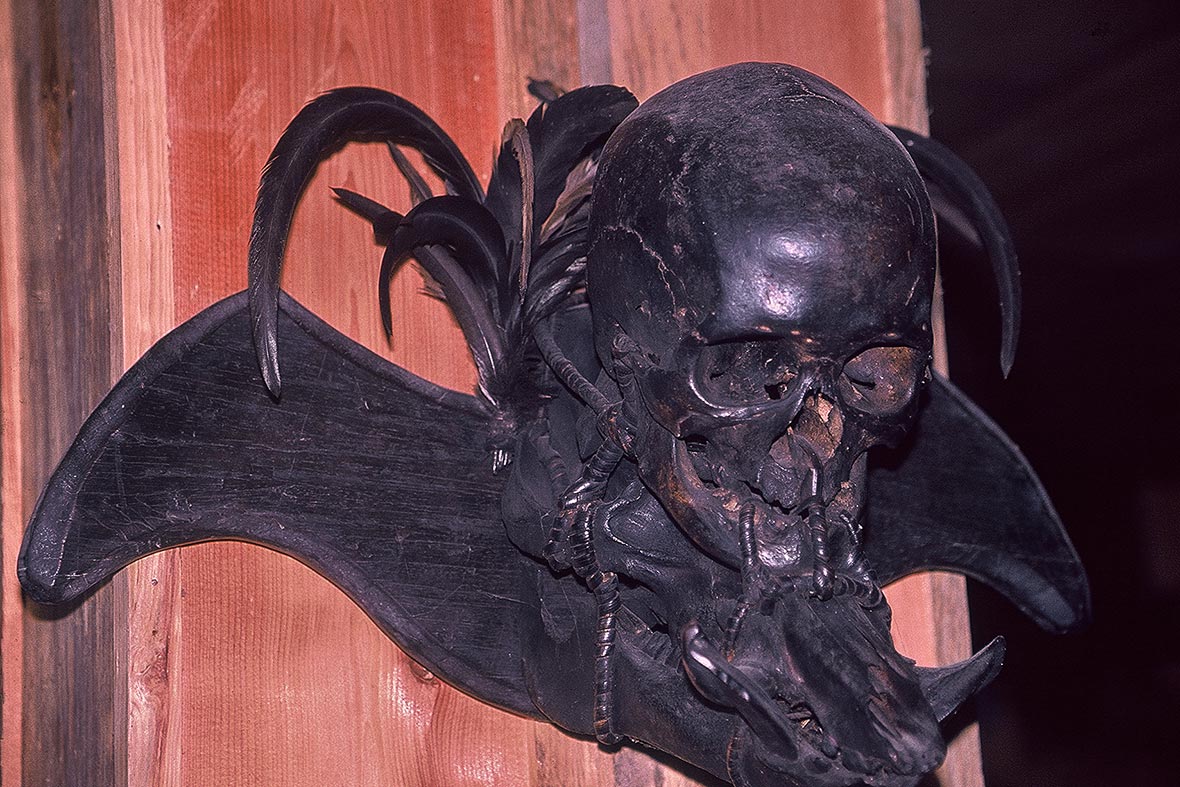
Other Bulul themes focus on a woman dancing with idols and an owl perched on or near a Christian cross. The notion of carving owls into stone for worship is a global phenomenon well known to primitive man. The idea is that the owl acts as a guardian guide through the night, pointing the way in the darkness to the coming of dawn. In most primitive societies, the night is something to be feared. For Bululs, exalting the owl can be viewed as casting away fears of the scary, misunderstood forces of the night that have plagued mankind since time immemorial.
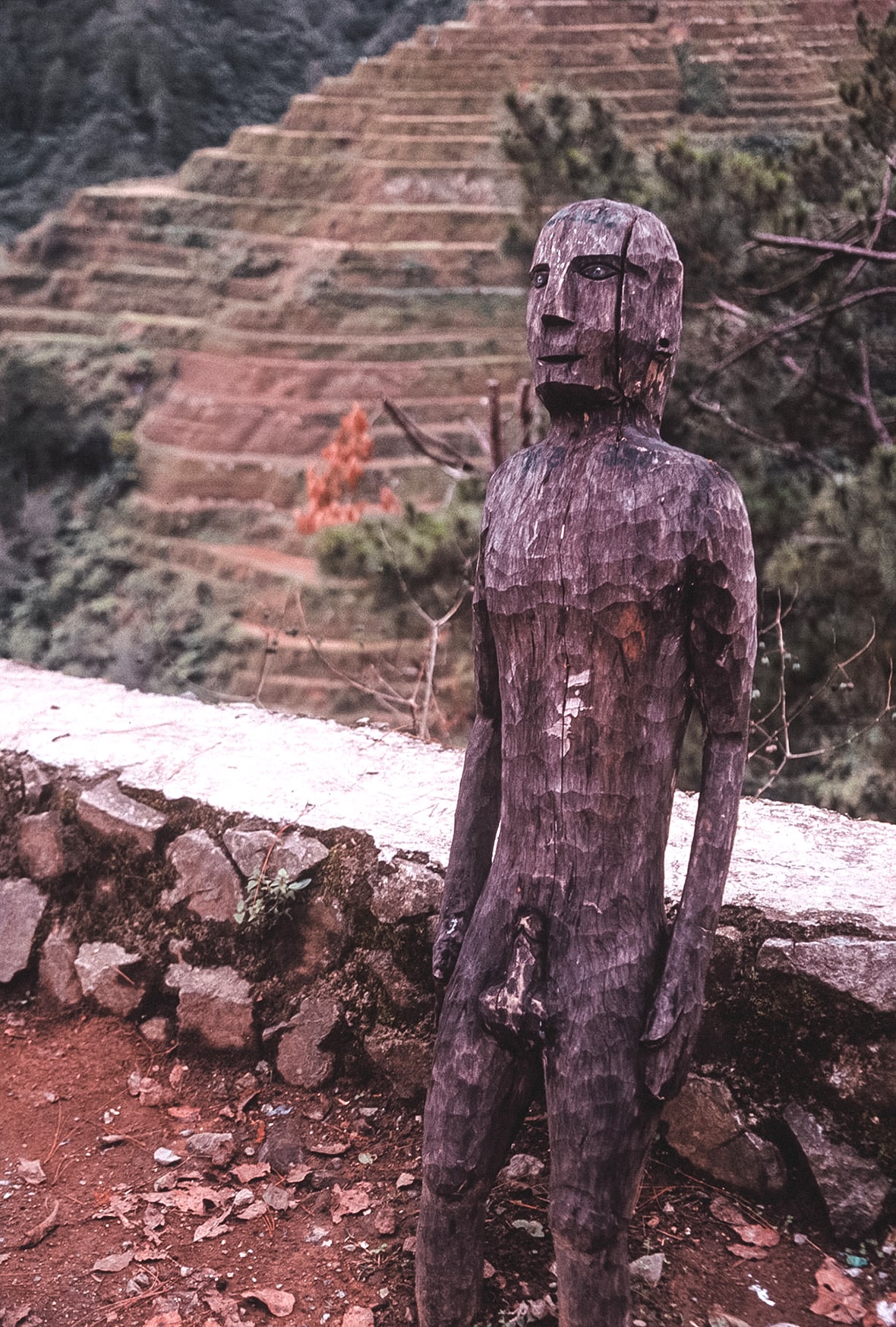
Some claim that owl worship is an indication of a loss of empathy for others and this, while unproven, is at least an intriguing theory based on the fact that the Ifugao people were once headhunters (now, they make their living crafting baskets, bowls and weapons). While Spanish missionaries and conquistadors went just about everywhere after Pope Alexander VI of Spain divided the world between Portugal and Spain at the Treaty of Tordesillas in 1493, they were leery, if not outright afraid, to venture in the territory of the Ifugao. This part of the Philippines put up a tremendous fight against Spanish colonialism for over 300 years. It is one of the few places in the Philippines where a trace of the original culture can be found. They have been fanatically devoted to their rice gods, even baptizing them with ritually purified and sacrificed pig’s blood. As such, the Ifugao embody the spirit of Lapu-Lapu, who fought off and killed Magellan. There is a fierceness to this place, both in the land and the ancient spirit of the people, which cannot be discounted. They are living history.
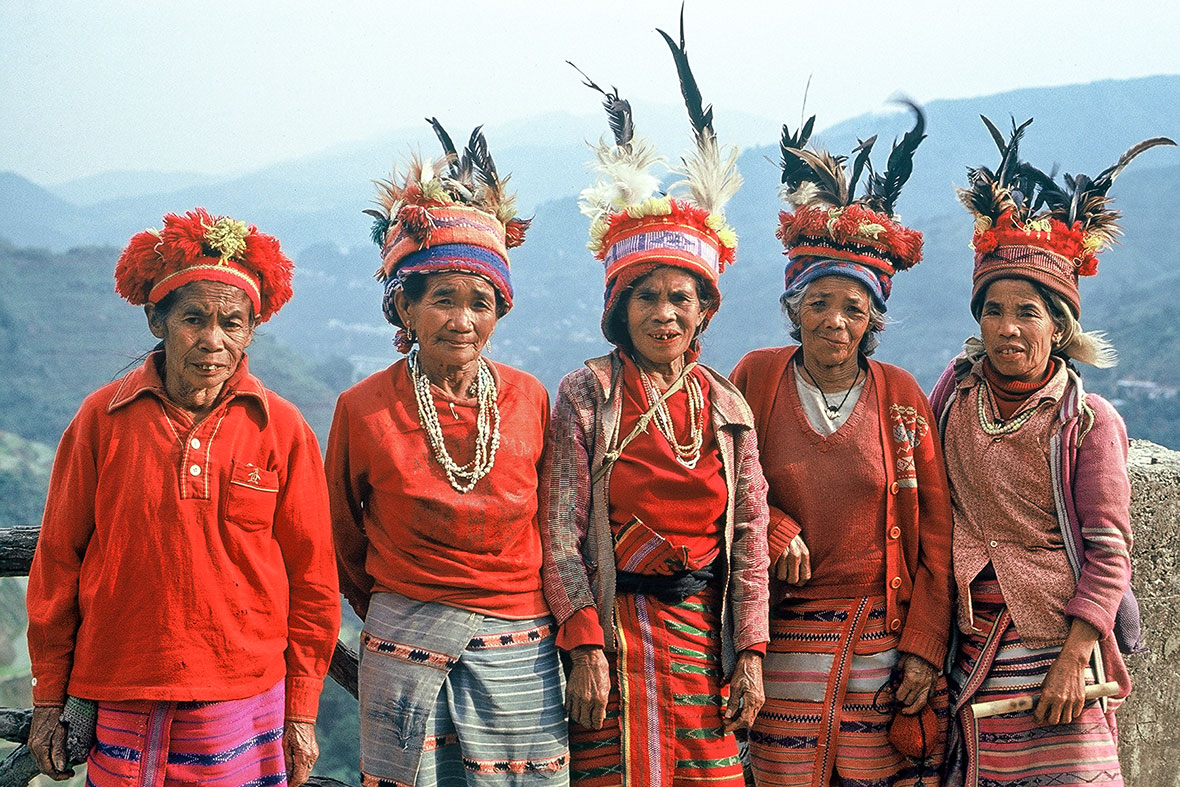
It is also possible to charter a helicopter to Banaue, skipping the long drive. It should be noted that the hotel accommodation is very basic, with mostly guesthouses and one hotel called the Banaue Hotel. This is not a luxurious place by any stretch of the imagination, yet the cultural experiences and natural beauty are rich enough to make up for any lack of sophistication and comfort. The opportunities for hiking, photography, history and cultural investigation are almost limitless in this part of the Philippines. From the last stand of the Ifugao people against the Spanish Empire to the last stand of the rice terraces against the forces of globalization, Banaue beckons visitors to take a stand of their own. It’s time to get to Banaue while you can still enjoy its beauty and culture.



